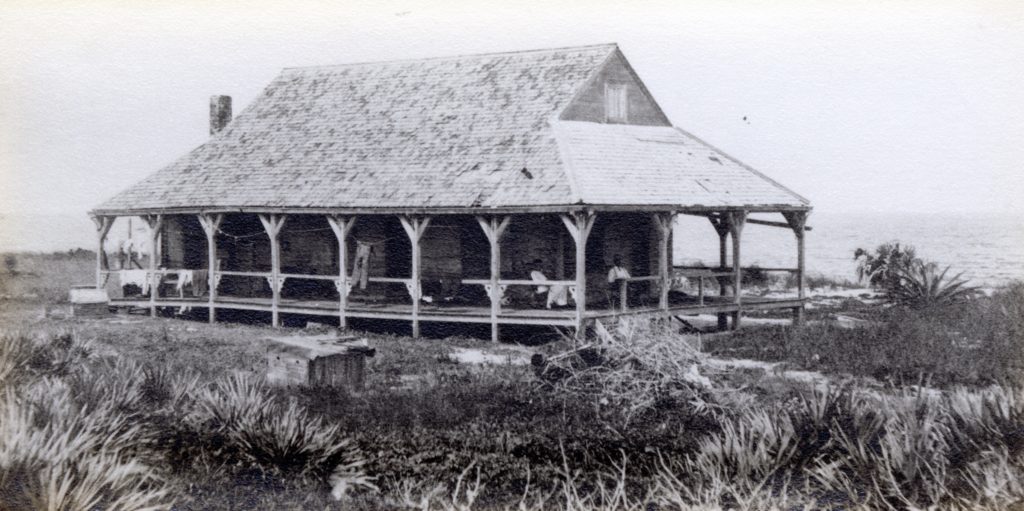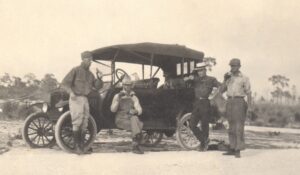The US Lifesaving Services built 5 refuges in 1876 along Florida’s coast. The name refers to an ancient rock wall that was discovered surrounding an acre of wild orange groves near this refuge. The wall is generally thought to be relics of an early Spanish settlement that had perhaps been killed by Indians. The refuges served to provide rescue and sustenance to the shipwrecked.
1876: Hannibel Dillingham Pierce appointed first keeper of The Orange Grove House of Refuge No. 3 (of 5). The “House” was located two blocks north of Atlantic Avenue on North Ocean Blvd. The U.S. Life-Saving Service, the precursor of the U.S. Coast Guard that was created in 1915, established the Houses of Refuge.
1885: Mail service by the Barefoot Mailman begun between Juno, Palm Beach and Lemon City, a community just north of Miami area
1890: East Coast Canal (Intracoastal) made navigable to House of Refuge area.
The Orange Grove House of Refuge was the first known building in Delray Beach and was used by the “Barefoot Mailman” on his overnight rests before continuing to deliver the mail up and down South Florida’s beaches.
The US Lifesaving Services built 5 refuges in 1876 along Florida’s coast. The name refers to an ancient rock wall that was discovered surrounding an acre of wild orange groves near this refuge. The wall is generally thought to be relics of an early Spanish settlement that had perhaps been killed by Indians.
The refuges served to provide rescue and sustenance to the shipwrecked. It was 2-stories with the second floor kept in constant readiness with cots and provisions for 20 people. This included bedding, clothing, books, and medications. The refuge was manned by Captain Andrews from London. He would rent it for $2-3 a month to the early pioneers when there were no other houses. It was also his duty to keep daily logs of the weather and search for anyone in need of help after a storm. It was originally called Zion, and it served as a post office from 1888 to 1892. In 1885, the “Barefoot Mailman” began delivering mail along the beach from N Palm Beach County to Miami and would often find refuge here. The round-trip journey was 136 miles and took 6 days. The mailmen would walk 7000 miles each year. The mailmen walked barefoot with their mailbags and shoes slung over their shoulders. The actual site of the refuge is the present location of the Grosvenor House Condominium at 120 N. Ocean Blvd. The refuge was closed in 1896.




